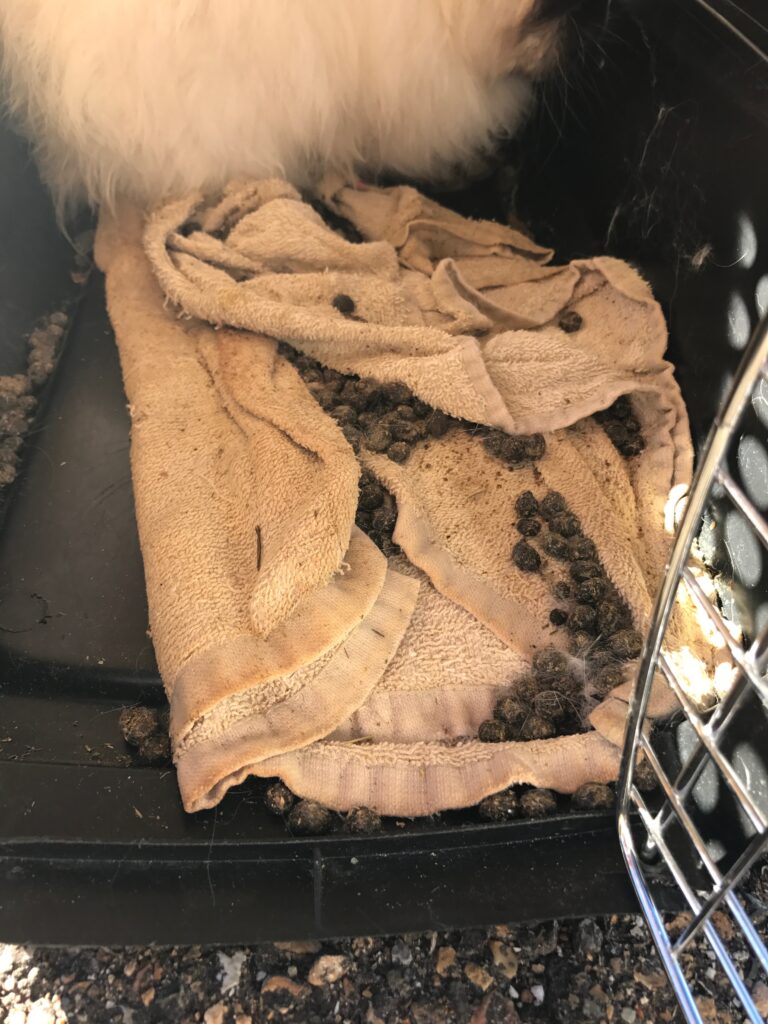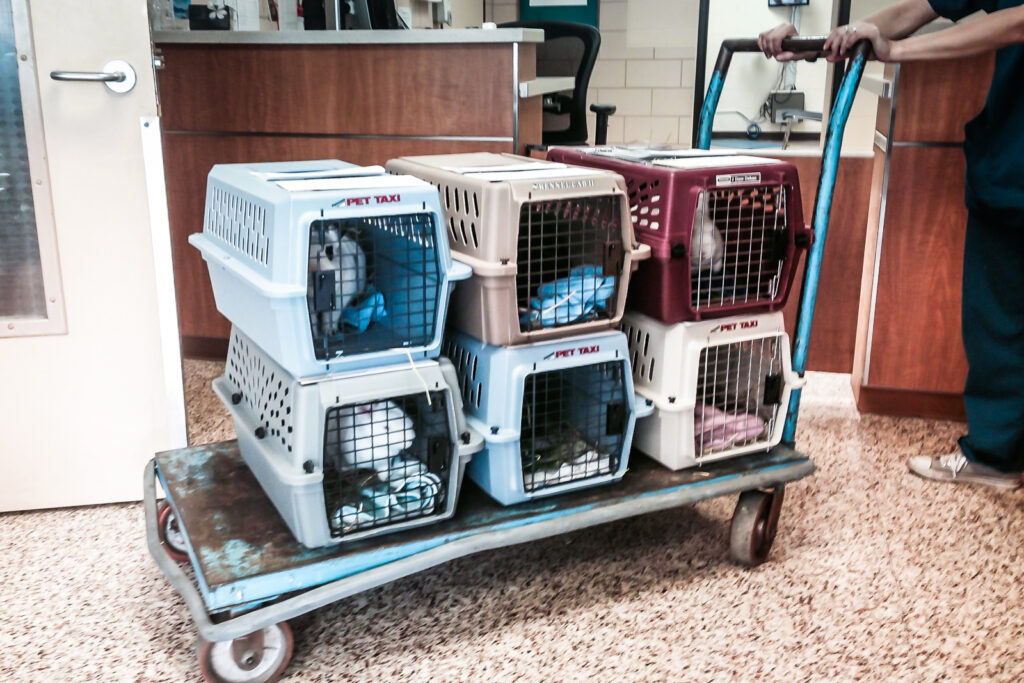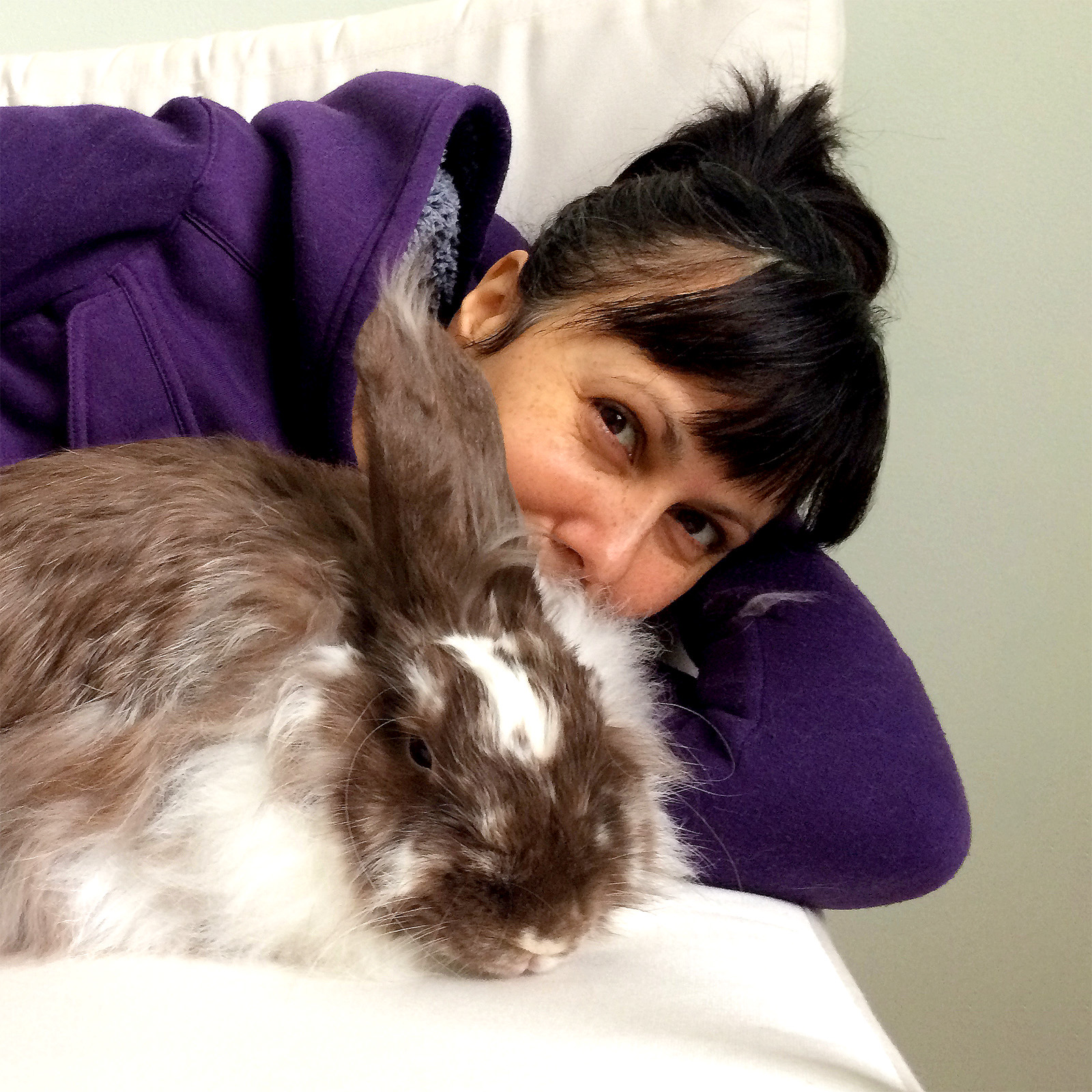When you need to move rabbits out of your city or state you’ll be looking at rabbit rescues and other types of sheltering agencies as possible destinations. We’ll look at how to screen each agency in just a moment. But first, there are ethical considerations to ponder when moving rabbits to new communities.
- There must be community demand for rabbit adoptions.
- The destination shelter must not euthanize rabbits for time or space.
- The destination shelter must have a strong infrastructure to receive the number of animals you want to send them.
Meeting these criteria is important for the ethical transport of animals into a new community. As rabbit rescuers we must avoid moving rabbits into an area where adoption demand is low and euthanasia is high, jeopardizing the lives of rabbits already there. An example of this type of
inhospitable situation is Southern California. This is an area where the number of rabbits needing homes is higher than adoptions thus the euthanasia rate for surrendered rabbits is extremely high.
Networking in person and using trusted sources as personal references.
When it comes to transporting rabbits do not trust relationships that only exist on social media. Social media is not a trustworthy or reliable source for information when lives are depending on you. What do I mean by this? Social media presents a cultivated, curated, filtered view that shows only what a person or organization wants you to see and nothing more.
Social media provides a narrow slice of information and not the entire picture. What are better sources for information? Combine several of these:
- your personal experience visiting the facility
- your personal experience networking with staff and volunteers of the facility
- your trusted sources who have personal (on the ground — not social media based!) experience with the person or facility
- check in with local humane advocates on the ground, such as local humane officers, animal control, or a high profile rescue organization.
Trust these sources before an organization’s social media supporters who may live in other states or countries.
Networking at veterinary exotics conferences, at rabbit gatherings such as BunFest and at other rabbit-focused educational seminars helps us to meet other rescuers in person and build lasting partnerships. Visiting other agencies and facilities also helps us gain personal knowledge
about who our rescue partners are.
Vetting the receiving shelters/agencies appropriately
As rescuers we must exercise due diligence before we transport rabbits. We must properly vet every new agency before we partner with them. Failure to do so jeopardizes the very lives we are trying to save. When in doubt:
- Call local animal control and humane society and ask if there are any complaints about the facility
- Speak directly with the facility president or operating manager and ask for assurances to address your concerns
- Ask for specifics in writing — such as promises to spay/neuter before adoption or promises to provide medical care
- Ask for tangible records from the agency: intake outcomes, number of rabbit adoptions, number of rabbit euthanasias, annual reports, budget information, etc.
Transport drivers should follow best practices to safeguard rabbit health
Agencies that regularly transport dogs (or cats) have developed guidelines for best practices. For instance, the National Federation of Humane Societies has an 8-page document called “Companion Animal Transport Programs — Best Practices”. Some of the care guidelines these agencies describe
vastly surpass what I have personally seen on some rabbit transports. Some things I have seen on rabbit transports that violate best practices:
- Excessively long drive time
- Driving without emergency medical supplies
- Unsafe number of carriers, or unsecured carriers
- No hay or water supply
- Sick animals on transport
- Unsanitary, filthy carriers — with no supplies to clean or refresh
- Crossing state lines without proper documentation (such as proof of
vaccination and health certificates) - Long transport with only one driver
- Animals left unattended in vehicle
- Animal carriers transported in the trunk of a car

Having best practices for transports gives us a ruler to measure how we are doing. Following these best transport practices ensures the safe and effective transfer of animals between organizations. The topic of best practices is too large to cover fully here, but here are a few things that transporters should be thinking of:
- Driver’s must visually inspect each rabbit before loading to ensure that
the conditions of transport are being met. It is very important for drivers
to understand that destination shelters may turn away animals who are
not as described! - Drivers should have a manifest of rabbits on the transport, w/photos
and ID numbers. - Each animal carrier should have a cage card w/photo and ID number.
Have a digital copy for your records. - Marathon drives longer than 9-hours should be completely eliminated.
Driving is very stressful for rabbits. Rabbits need down time to eat,
drink, and bounce back from being on the road. Humans can tolerate
marathon drives, rabbits can not, especially if they are already
compromised by coming from a confiscation or other stressful situation. - Drivers should also visually inspect each rabbit upon delivery at the
destination shelter. Any changes from the beginning of transport to the
end of transport should be noted in writing.

Being as organized as possible in all stages of transport
Large transports are very complicated and time consuming. They can feel overwhelming. If you don’t get organized you’ll feel even more overwhelmed. Here are some ideas on how to get organized which will help make the process easier for you.
- Create specific folders in your email relating to the transport.
- Do the same on your computer for other transport documents.
- Create a photo manifest of all rabbits on the transport and what destination shelters they are going to.
- Create a list of drivers with all their contact information
- Create a transport itinerary that covers the activity of each day of
transport and each driver’s responsibilities for each day. - Regularly communicate with your drivers and destination shelters
throughout the process.

Keeping detailed records that can be used to build a case
Gathering evidence can be a part of a transport. Some transports reveal unexpected problems, such as neglect or troubling conditions that are only revealed when you or your destination shelters receive the rabbits.
In this sort of situation, you may find yourself needing to gather evidence or needing to provide guidance to others on how to gather evidence. If you need to gather evidence your job is to create a paper trail and to document issues with photographs.

- Write down your observations — be sure to date and be specific
- Take photographs and be sure to use a ruler for scale
- Shoot video if photographs are not sufficient documentation — be sure
to date and time stamp - Collect all veterinary bills and medical records
- Save copies of health certificates and other relevant paperwork
- In the case of death, get necropsies done so a formal cause of death is established
- Ask for medical records and a formal statement from the veterinarian who provided treatment
- Ask for a formal statement from destination shelters if they observed problems or issues
- Ask for copies of intake paperwork from destination shelters if they observed problems or issues
- If you are aware of rabbits who died or disappeared before they could make it onto a transport try to document their existence (via screen shot or social media photos, etc.)
These types of records will be extremely useful as evidence. It’s vital to document as you go because our memories fade and become inaccurate.
In Summary
The first step to transporting rabbits must be to make sure their proposed destination community meets the ethical standards of transport.
When choosing rescue partners we cannot be reliant on relationships that solely exist on social media platforms. Instead, we must partner with rescue agencies who we have either personally screened or with whom we have a trusted source to vouch for their care standards and outcomes.
Properly screening agencies (most especially destination shelters) does take extra time and effort, but we sabotage the purpose of transport if we do not do our due diligence and we endanger the lives we hope to save.
Adopting transport best practices for rabbits ensures the safe and effective transfer of animals between organizations. Rabbit rescuers must be the leaders in elevating the care standards for rabbits on transports. Minimizing stress while maximizing safety and comfort needs to be our
transport doctrine.
Being as organized as possible during each stage of transport is essential and will prove helpful for each person involved. After the completion of a transport gathering evidence may be needed.
Creating a paper trail consisting of detailed notes, photographs, videos, and official statements and records is key to documenting neglect or abuse. Being organized also helps facilitate evidence-gathering.
By covering each of these bases, we create the foundation for solid rescue partnerships and successful transports. We will help more rabbits and more communities who are struggling when we participate in a robust transport program.
Resources
Download these free tools to help organize your rabbit transport:
©Copyright Amy Ramnaraine. All Rights Reserved. Republished with the permission of the author.
Updated: January 20, 2024

